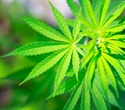“To assess the effects of cannabis on the ability required to ride a bicycle, repetitive practical cycling tests and medical examinations were carried out before and after inhalative consumption of cannabis.
A maximum of three joints with body weight-adapted THC content (300 μg THC per kg body weight) could be consumed by each test subject.
Fourteen regular cannabis-consuming test subjects were studied (12 males, 2 females).
In summary, only a few driving faults were observed even under the influence of very high THC concentrations. A defined THC concentration that leads to an inability to ride a bicycle cannot be presented.
The test subjects showed only slight distinctive features that can be documented using a medical test routinely run for persons under suspicion of driving under the influence of alcohol or drugs.” http://www.ncbi.nlm.nih.gov/pubmed/26739323
“Alcohol-related deficits were already identifiable at very low blood alcohol concentrations (BAC)s. A significant increase in gross motoric disturbances compared to the soberness state did not regularly occur until a BAC of at least 0.8 g/kg was reached. At the BAC of 1.4 g/kg and above, no test subjects were able to achieve or surpass their sober driving results.” http://www.ncbi.nlm.nih.gov/pubmed/25428289
“The practical ability to ride a bicycle was significantly reduced in the postalcoholic state… The relative cycling performance in the postalcoholic state was comparable to the rides under the influence of BAC of around 0.30 g/kg… it can be assumed that the direct influence of residual blood alcohol levels plays a minor role for the ability to ride a bicycle in the postalcoholic state. Instead, the side effects of the high amounts of alcohol that were consumed the night before are crucial.” http://www.ncbi.nlm.nih.gov/pubmed/25940454
“A defined THC concentration that leads to an inability to ride a bicycle cannot be presented.” http://www.ncbi.nlm.nih.gov/pubmed/26739323




